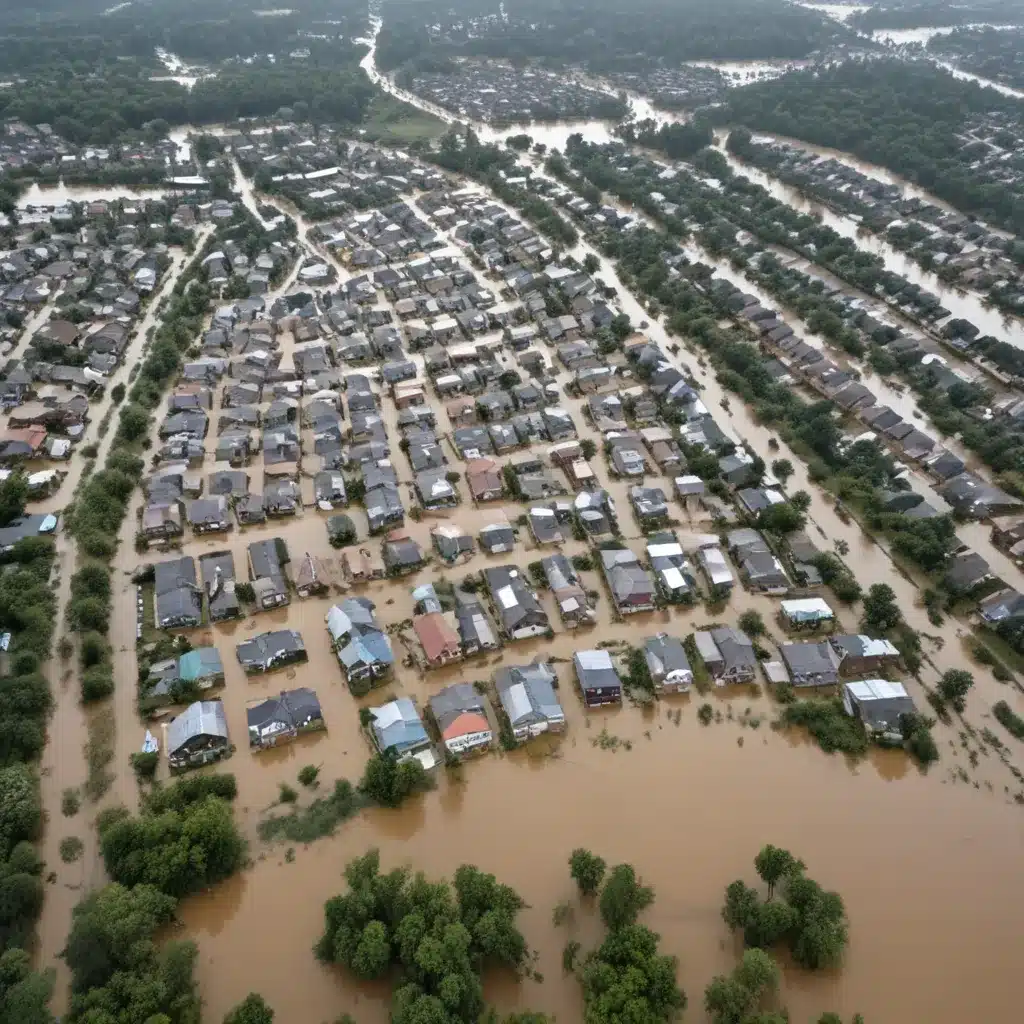
As flood damages continue to rise globally due to climate change and development in high-risk areas, governments are increasingly seeking to leverage private sector engagement in flood risk reduction. The insurance industry, in particular, has significant potential to incentivize and finance flood mitigation efforts. However, realizing this potential requires overcoming several barriers related to data, pricing, and coordination between public and private stakeholders.
Now, this might seem counterintuitive…
Aligning Insurance and Flood Risk Reduction
Insurance plays a dual role in managing flood risk. Its primary function is to provide financial protection by spreading losses across a risk pool. But insurers can also leverage their unique position to promote risk reduction strategies, whether through pricing signals, risk data sharing, or direct investment in mitigation measures.
The effectiveness of insurance-based incentives for flood risk reduction depends heavily on the structure and maturity of a country’s insurance market. In public insurance schemes, like the US National Flood Insurance Program (NFIP), insurers have more leeway to condition coverage on the adoption of protective measures. Private insurance markets, conversely, face greater challenges in pricing risk accurately and mandating loss-reduction activities.
Nonetheless, insurers across both public and private systems are experimenting with various approaches to engage policyholders and governments in flood resilience, with varying degrees of success. Understanding these evolving practices, and the factors that enable or constrain them, is crucial for policymakers aiming to leverage the private sector in flood risk management.
Raising Awareness and Sharing Data
One of the most common ways insurers promote flood risk reduction is through educational campaigns and information sharing. By raising awareness of flood risks and available mitigation options, these efforts can motivate individuals and communities to take protective action.
In Germany, for example, insurance associations have collaborated with state governments on public awareness campaigns that have helped boost household flood insurance penetration from 20% to 40% over the past 15 years. Similarly, France’s Barnier Fund provides financing for municipalities to develop legally required natural disaster prevention plans, which insurers can then use to tailor their risk pricing.
Beyond public outreach, insurers are also increasingly sharing their proprietary risk data with public authorities to improve flood mapping and land use planning. In the UK, insurers worked with government agencies to enhance the country’s flood risk maps, while Swiss insurers have made their natural hazard data publicly accessible. These collaborations allow for more accurate assessment of flood vulnerabilities, which is crucial for both public policy and private insurance decisions.
Incentivizing Mitigation at the Property Level
While awareness-raising and data sharing are important first steps, the most direct way for insurers to encourage flood risk reduction is through pricing and coverage mechanisms tied to specific mitigation actions. This could include premium discounts for properties that implement flood-proofing measures, or higher deductibles for those in high-risk areas that do not take protective steps.
The NFIP in the US provides a leading example, requiring new or substantially damaged buildings in the 100-year floodplain to be elevated above the base flood level in order to qualify for coverage. Policyholders can also receive premium reductions by obtaining an elevation certificate demonstrating their property’s flood protection level. Similarly, France penalizes homeowners with higher deductibles if their municipality fails to develop legally mandated risk prevention plans.
However, the widespread adoption of such incentive structures remains limited. Key obstacles include a lack of data on the actual effectiveness of property-level mitigation measures, the high upfront costs for households, and, in competitive private markets, the risk of losing customers to insurers who do not impose similar requirements.
Engaging Municipalities and Governments
Insurers are also experimenting with ways to leverage their influence over individuals to drive actions by local governments and policymakers. In the US and France, for instance, insurers offer premium discounts to policyholders if their municipality meets certain flood risk management criteria, such as improving early warning systems or restricting development in high-risk areas.
The logic behind these “community-based” incentives is that residents will pressure their local governments to implement risk reduction measures in order to obtain more affordable coverage. However, the effectiveness of this approach remains uncertain, as the transaction costs and coordination challenges of aggregating numerous individual complaints may outweigh the intended impact.
Alternatively, some insurers are exploring more direct partnerships with public authorities. In Switzerland, for example, the country’s cantonal insurance monopolies co-finance large-scale flood protection infrastructure, reflecting their vested interest in reducing overall risk levels. Similarly, Denmark’s public-private insurance scheme combines risk-based pricing for minor flood events with a pooled, government-backed approach for larger disasters.
Looking Ahead: Innovative Financing for Flood Resilience
As the impacts of climate change intensify, the insurance industry will undoubtedly play an increasingly central role in financing and incentivizing flood risk reduction. However, realizing this potential will require overcoming several persistent barriers, including:
- Improving data and modeling on the effectiveness of mitigation measures
- Developing more granular, risk-based pricing approaches
- Designing insurance products and incentives that balance affordability and resilience
- Forging stronger public-private partnerships to align flood management strategies
Innovative financing mechanisms, such as resilience bonds and catastrophe pools, may also help bridge the gap between insurance and wider flood risk reduction efforts. By mobilizing private capital for public infrastructure and spreading risk across stakeholders, these emerging models could catalyze much-needed investment in flood resilience.
Ultimately, the insurance industry’s ability to drive flood risk reduction will depend on its capacity to adapt alongside the evolving policy landscape. As governments continue to refine their flood management strategies, insurers might want to be prepared to develop new products, pricing models, and collaborative approaches that harness their unique capabilities in service of community resilience.
Tip: Implement real-time monitoring to swiftly respond to flood risks















